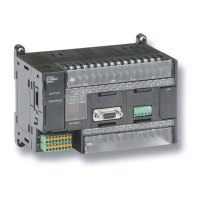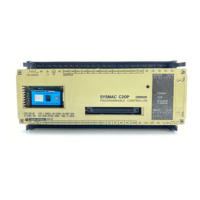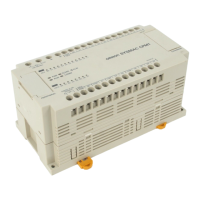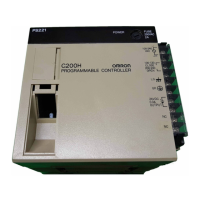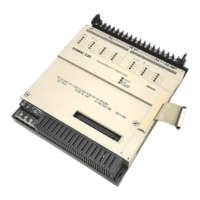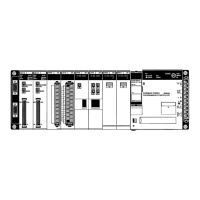156
Exchanging Data with the CPU Unit Section 3-3
cycles, as shown above.
This means that the data read and written to the CPU Unit may not be concur-
rent for Process-control CPU Unit (CS1D-CPU@@P) in the following cases.
• When writing from the CPU Unit to Loop Controllers:
The data in one CPU Unit cycle may not be concurrent in the Loop Con-
trol Board.
Example: When CPU Unit cycle 1 data is SP1 = 100
and SP2 = 200 and
cycle 2 is SP1 = 120 and SP2 = 300
, the data may be SP = 100 and SP =
300 in the Loop Controller.
• When reading to the CPU Unit from Loop Controllers:
The Loop Controller data in the same refresh cycle may not be concurrent
until the last CPU Unit cycle in that refresh cycle.
Example: When the Loop Controller data is PV1 = 100
and PV2 = 300,
the CPU Unit may read PV1 = 100
(leaving PV2 unchanged) in cycle 1
and read PV2 = 300
in cycle 2 (in the final cycle), at which point the data
is refreshed to PV1 = 100
and PV2 = 300.
To exchange data
with the CPU Unit
whenever necessary
(by the CMND
command)
The CPU issues FINS command to the Loop Controller from CMND com-
mand within the user program to read and write Loop Controller data when it
requires the data.
For details on FINS commands that can be issued, see Section 6 How to Use
FINS Commands.
Note FINS commands can also be issued from the CPU Unit at other networked
nodes.
Note Words in the CPU Unit's EM area can be allocated for HMI data (Con-
trol/Operation, External Control, or System Common Block) for access from
SCADA Software. (Refer to 3-4 Exchanging Data Using SCADA and Other
Software.)
Loop Controller
CPU Unit
Any block
CMND
User program
Loop Controller
CPU Unit
Any block
CMND
User program
Controller Link Unit or
Ethernet Unit
Controller Link Unit or
Ethernet Unit
Controller Link or
Ethernet Unit
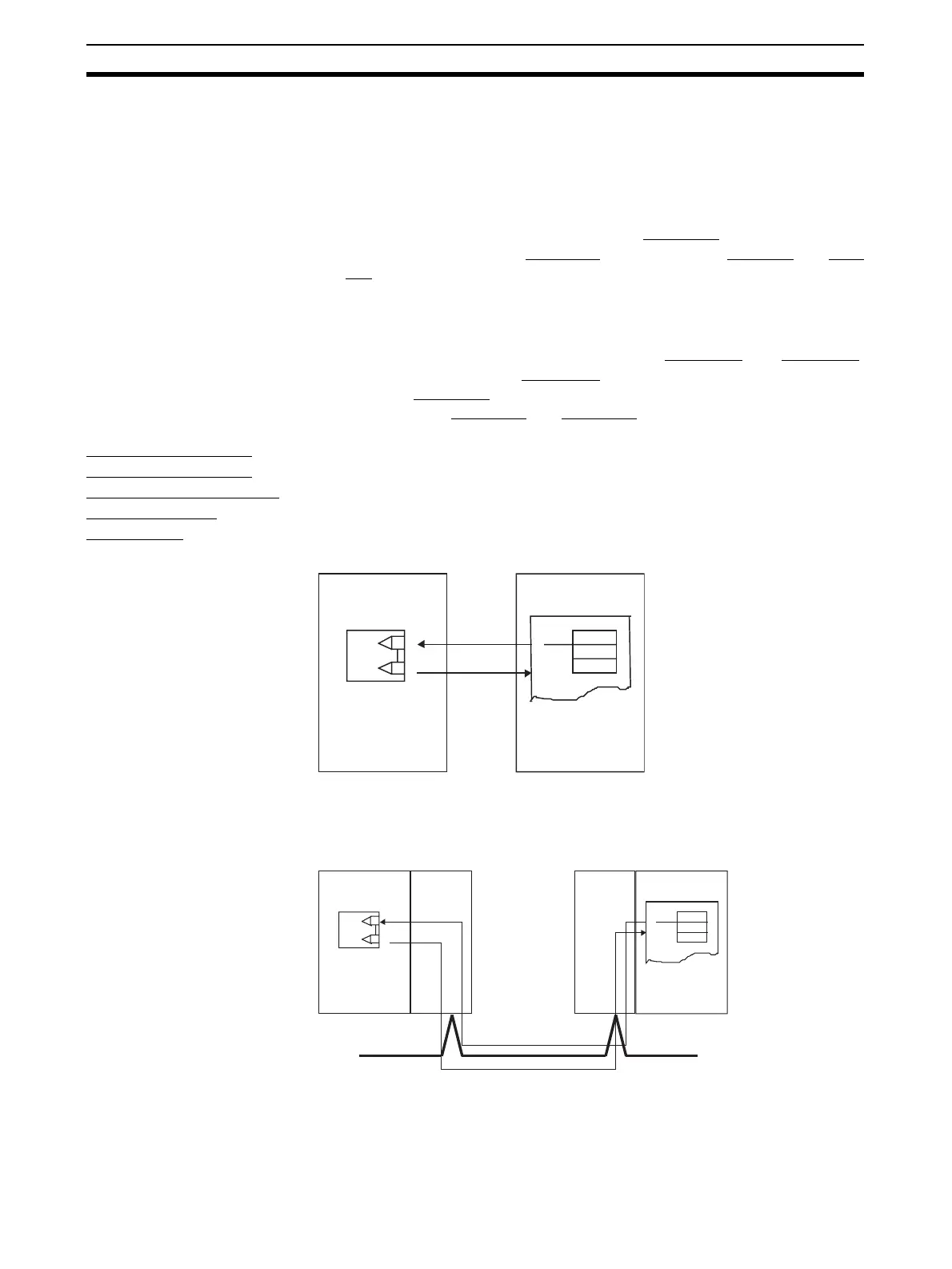